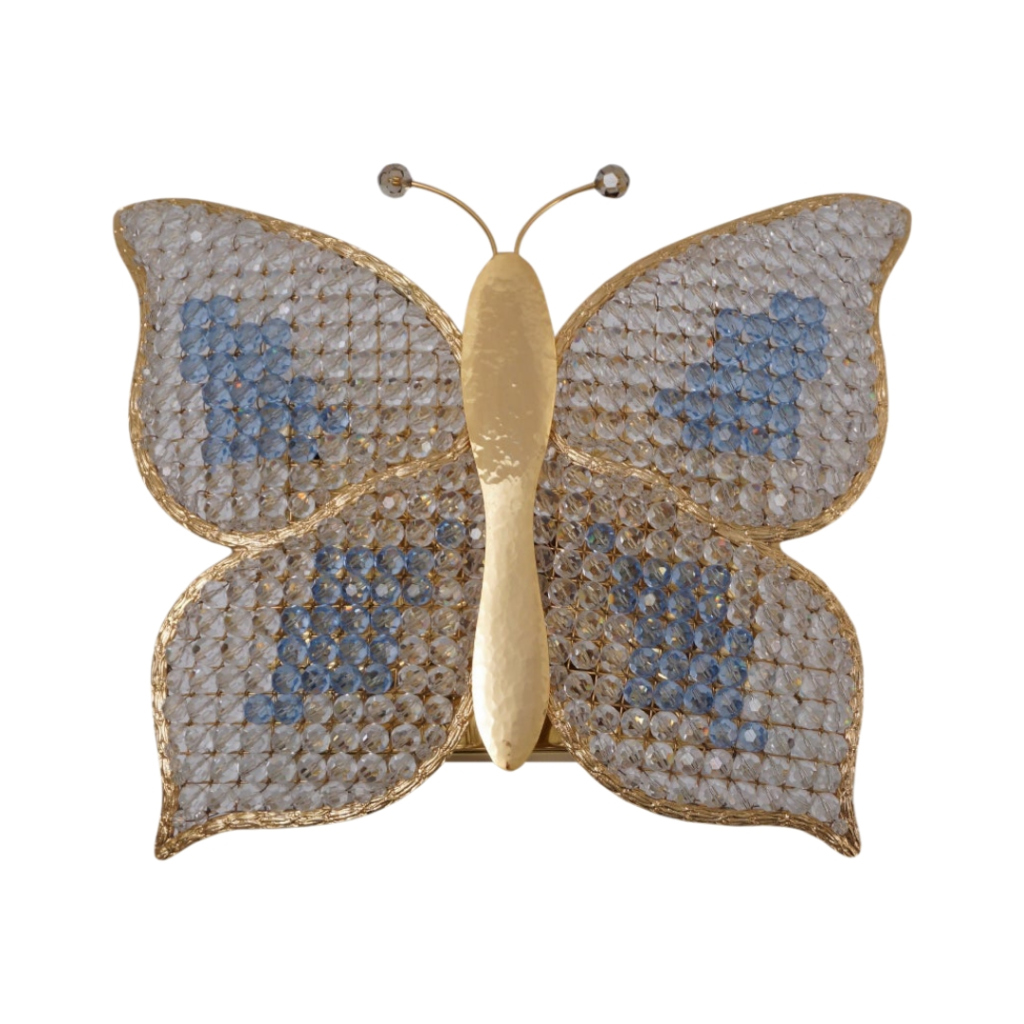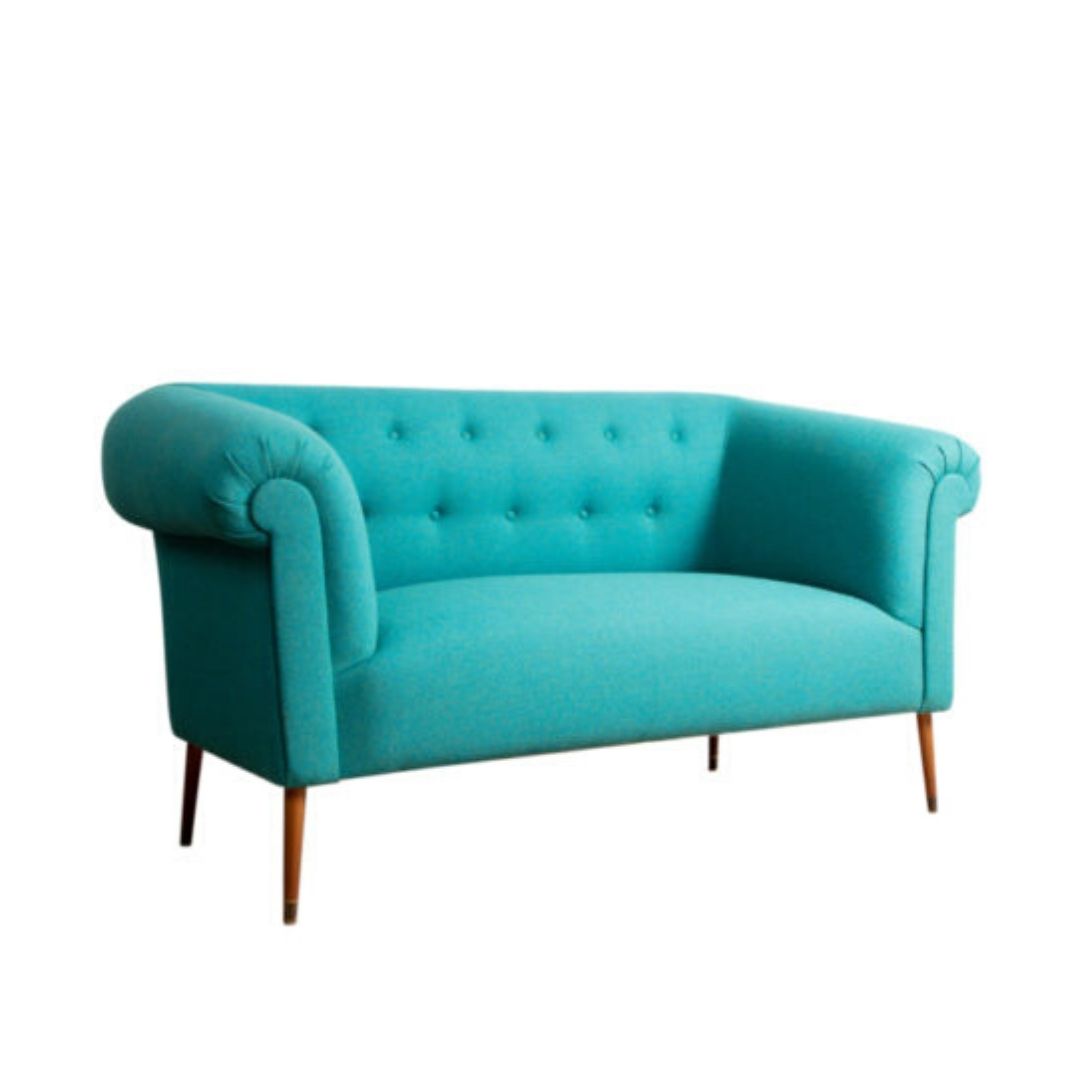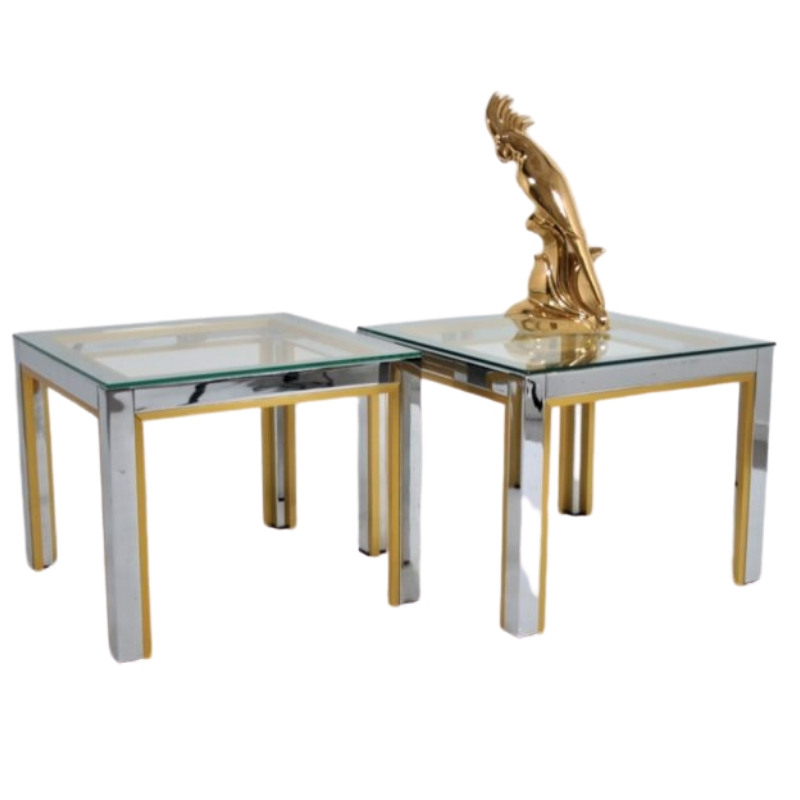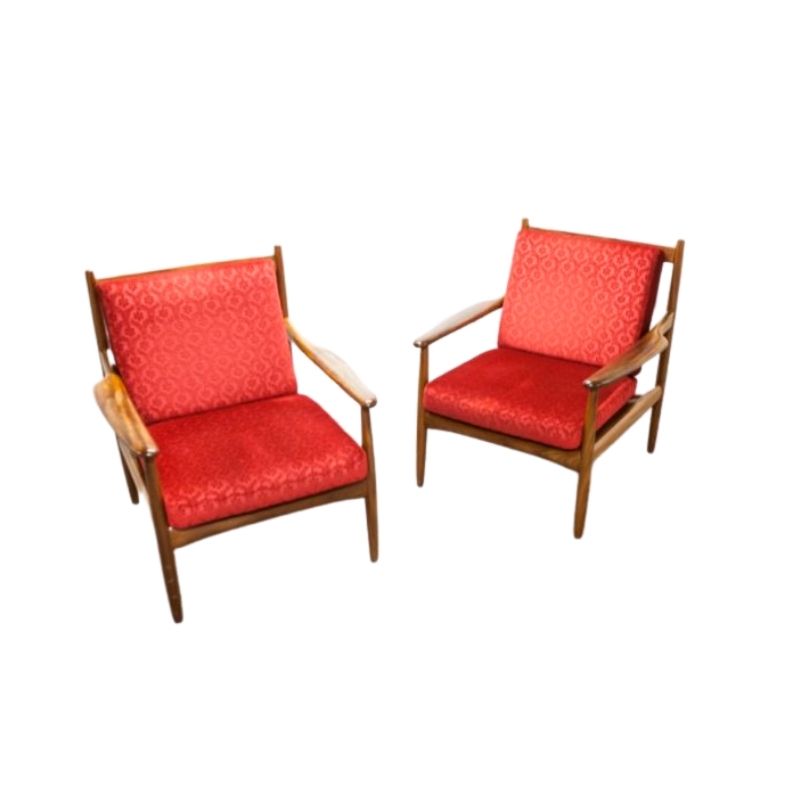Well I'm happy I found it....
Well I'm happy I found it. Don't care that it's not the real thing. The price was right!
A local MCM furniture guy showed me how to strip it and now I'm going to strip entire thing, stain it and have a chair that looks nice and is practical. Good for my purposes!
It is a Herman Miller chair.
With all due respect, any of you who have mentioned that this is not authentic are incorrect. It is undoubtedly an early Herman Miller, not Evans DCW. The shock mounts appeared to have failed once before and were re-glued, which is not uncommon. Early HM chairs also used this larger oval shock mount (at the backrest) before switching over to the circular mounts again. The screws, which look incorrect do not indicate that the chair is fake, instead, it indicates that a previous owner would have worked on it and potentially lost some of the old screws (the two with metal washers especially). To further clarify, the old thonet chairs did not have the same shape, and a missing tag on Eames plywood chairs is not uncommon. You have yourself a wonderful example, which you should repair to be usable again. I would simply re-glue the poorly re-glued shock mounts, use an epoxy with black dye to give it the correct color, and refinish the chair or even just the seat depending on your preference. This DCW is not a ten thousand dollar museum example, but a nice vintage HM piece that should be cherished.
Hi
DavidR, since you seem to speak with some authority, can you offer the following clarifications:
1. What type of veneer is used on this chair?
2. All single shock mount examples (presumably Evans) have the shock mount flush with the top of the spine. Do you have documentation of an HM example that looks like the chair here?
3. The edges of the frame (and possibly the legs as well) appear to be rounded/smoothed. I have not seen this in any DCW/LCW.
4. Finally, were any of this version of (supposed) HM production marked in any way? What type of label did they typically have?
Thanks for the information.
Hello, you bring up some...
Hello, you bring up some very good points indeed.
1.With regard to veneer, I am not 100% sure, though my best guess would be walnut.
2. Due to the work shown on the chair, such as the poorly re-glued shock mount, it seems possible that the larger shock mount was also poorly re-mounted. It could also be that this chair could be part of some rare breed with a non-flush mount, though I could find no such examples and that seems unlikely.
3. The rounded edges visible from the pictures look correct, all but the rounded edges on both ends of the spine. Herman Miller would have never rounded the chair like that, so yet again, more proof that this chair had some previous work (and likely a non-original refinishing).
4. If this chair is early 50's, I believe that it would have the long rectangular HM label, while later 50's would be the round white metal label. All would have been labelled and possibly unmarked otherwise (but many labels come off over time).
The main justification behind the authenticity is that these chairs were not copied to near perfection until much more recently (you can now tell with quality instead). There is a major difference for example between the Thonet and HM plywood chairs and the Plycraft...Selig.. and the 670 & 671. The DCW's have an immediately recognizable spine, back, seat, and legs. If the shape of them is identical, besides an edge or two, it is easy to point it out as authentic. If the screws match up, you have more proof, the same going with the shocks. Eames designs have over time been altered so that the user can continue using them. My best 670 & 671 find was an example with absolutely false looking cushions, the reason being that the leather cracked and it was re-upholstered poorly so that it could be used again. "Incorrect" elements are often just simple solutions.
.
Rubberwood is what came to my mind when I saw the wood grain figure in the 4th pic in the 2nd set of images (back of the spine), but then look at the front... and it appears to be a fine walnut. Try spending some time looking at all of the pictures, evaluating from different perspectives, while trying to keep an open mind, it's pretty fascinating. And I think it would be a lot (underscored) simpler to evaluate if IT COULD JUST BE SEEN IN PERSON. I see this is a nice little lesson about pictures on the internet, and what we can project upon them, what we think we can "see".
I think the most distinctive bit of the real Herman Miller D/L/C/M/W is the edge of the seat, the contour, thickness, shape and construction of the form is unique.
And with the icon of the DCW a counterfeit 'in the style' can literally only get so "good" because you just can't make a chair that good with lower costs, therefore you can always pretty easily tell a counterfeit if you are familiar with the original object, but not always that easily from pictures. There are interesting reversals in this concept going on here, I think. My vote is that it's a corrupted vintage piece.
pics of the pair I unfortunately purchased
Figured this would make it easier for you to see that these are fairly identical to the OP's so you don't have to scroll through the other post. Oval shock mount is not flush with the top of the spine, the "shiny finish" etc....so the hypothesis that someone rounded the edges and re glued the oval shock mount improperly during a back yard refinishing project is pretty much void...
Thanks
jdip for adding your photos to this thread.
I don't completely exclude the possibility that these chairs are authentic HM. It is a bit of a stretch to think that the DCW was being knocked off many years ago, or that someone is producing "vintage-looking" chairs now. On the other hand, it would certainly be reassuring to see some kind of official documentation of this iteration of the chair.
You have a point, object.
And I appreciate what you're saying. It is virtually impossible, sometimes, to identify wood species in person with a magnifying glass, nevermind in poor photographs on a computer monitor.
I'll leave judgement of stylistic and construction details to those more familiar and well-versed in those areas than myself.
That said, it's the image of the sanded seat panel I that find most damning. I have never seen freshly sanded walnut - and I agree that walnut would be the logical assumption if the chair were authentic - appear anywhere close to the way the sanded areas on seat look in that photograph. That and the obvious indications that the color is in the finish are what I've based my comments on.
Evans
Take a look at this Evans DCW currently on eBay. The wood grain on the frame actually looks somewhat similar to the chair in this thread (underneath the stain). But the other details of the listed chair are consistent with what is recognized as Evans or HM production (because it is an authentic chair).
objectworship, I agree that seeing the chair in question in person would certainly help to solve the question.
http://www.ebay.com/itm/290787464458?ssPageName=STRK:MEBIDX:IT&_trksid=p...
Thanks for
that link, Woodywood. I have copied one of the photos, to show the varying thickness of the spine which I mentioned above, as my objection to the claim of authenticity for the subject chair. Note in the upper right of of the photo the dark line of core veneer, as it moves closer to the inside of the bend; one of the two light-colored veneers is tapered to nothing at this point.
I have assumed this to be a feature of all vintage Eames DCW and LCW chairs, though I do not have direct knowledge of any differences in this area between Evans and HM production. I have not seen other commenters discuss this feature; I discovered it only by looking at the chairs themselves. I know for a fact that this subtlety has been eliminated in new-production (authorized) chairs.
If you need any help, please contact us at – info@designaddict.com









